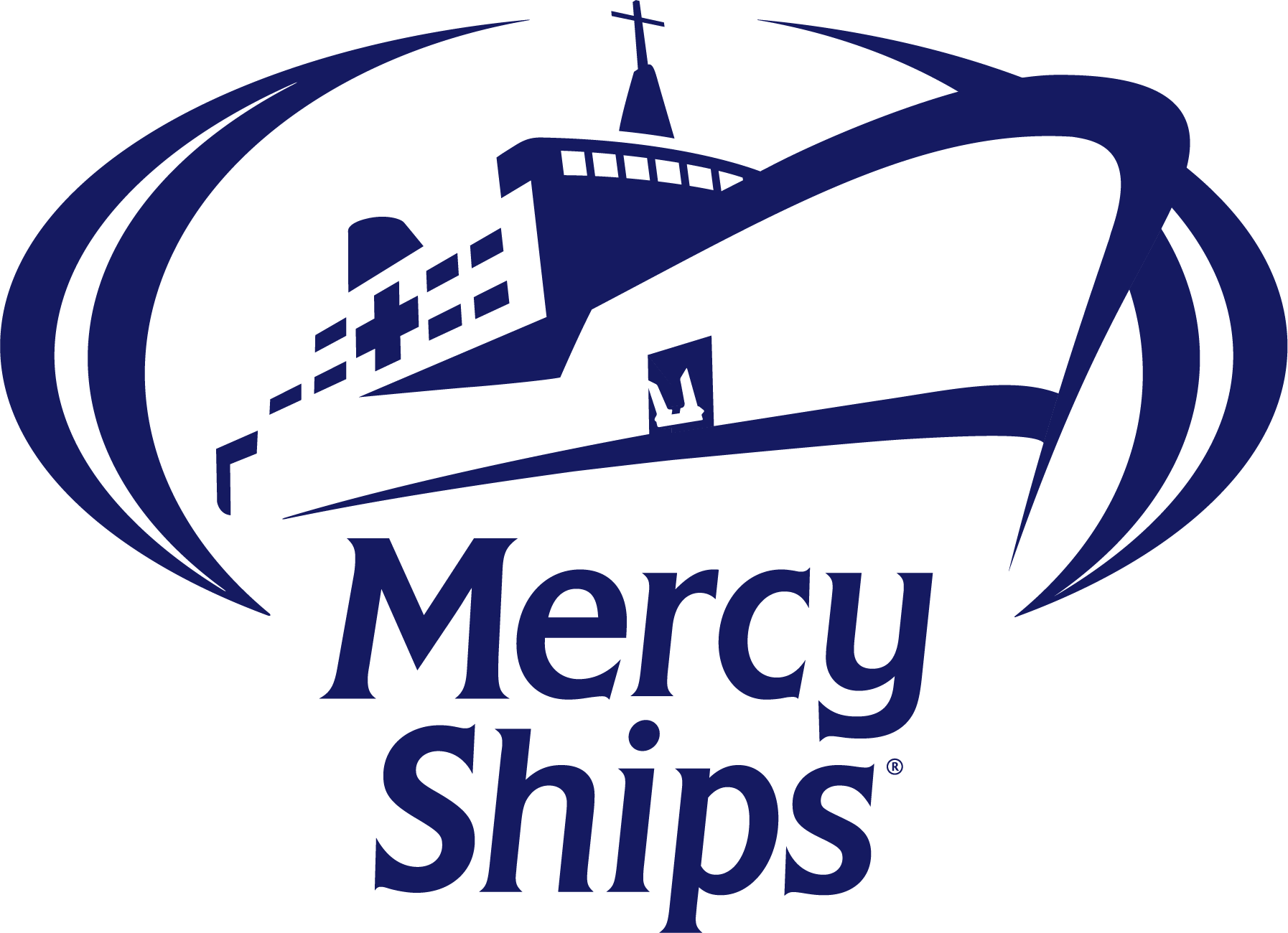Mercy Ships + Atlassian
Mercy Ships brings healthcare and hope to underserved communities with the help of Atlassian

Industry
Nonprofit
Locations
Headquarters in Lindale, TX, USA
Company Size:
880
Number of users:
880
Products
Running a hospital presents endless complexities unique to healthcare organizations: sourcing sterile supplies, staffing people with the right expertise, maintaining safety and compliance, system interoperability, and more. When that hospital is on a moving ship – where at any given time 450-plus international volunteers are living, working, and raising their families – providing care to underserved communities, the operational challenges are even greater – as is the need for a highly specialized communication and collaboration solution to facilitate their lifesaving work.
Mercy Ships knows these challenges well. The nonprofit deploys seaworthy hospitals to deliver free medical care and rebuild healthcare infrastructure in some of the poorest areas of sub-Saharan Africa, where limited access to clean water, reliable electricity, and monitored care centers make creating a safe, sterile environment even more difficult.
Volunteers with Mercy Ships perform over 2,000 surgeries (including maxillofacial, foot straightening, and cataract removal, just to name a few) and 20,000-plus dental procedures each year. In addition to providing services on the ship, volunteers travel into nearby communities to equip 1,400 local healthcare professionals annually with training and supplies “so we can leave the country’s medical arrangements better than we found it,” says Vice President of Information Services Dave Shwadlenak.
People from all walks of life trade their traditional jobs, and in some cases uproot their families, to be part of the Mercy Ships mission to “bring hope and healing to the world’s forgotten poor.” The hospital ships serve not only as a workplace where volunteers care for patients, but also as a mini city that houses everything they need for daily life, from a school for their children, to a bank, to entertainment, and more.
Operating this kind of floating community and providing underdeveloped countries with free medical services is no easy feat. It requires support from over 800 employees in 16 offices around the world, thousands of volunteers, and even more donors. Atlassian is part of the engine that makes it all possible.
The technology engine that keeps Mercy Ships afloat
When Mercy Ships launched its first mobile hospital in 1978, they never fathomed it would sail for over 40 years, impact 2.7 million beneficiaries, and welcome over 25,000 volunteers. Since then, the organization has used several different ships to bring safe, affordable medical care to some of the world's poorest countries and continues to do so on its state-of-the-art hospital ship, the Africa Mercy.
As Mercy Ships grew, so did the complexity of managing many departments onboard and on land, over 1,200 volunteers and 12,000 patients each year, hundreds of global support team members, and a large donor base.
Over time, information became scattered across multiple intranets, teams, and locations, which made it increasingly difficult to work efficiently and effectively. “When they finally got email on the ship, we would email one person, and that person would print out every email and walk around the ship with printouts for people,” Michelle Vincent, Technology Product Manager - Medical, recalls with a laugh.
Many people noticed these challenges, and when the CEO recognized them too, the team took action. “When our previous CEO joined us in 2006, he asked for a travel policy for the organization,” remembers Russ Holmes, Director of Corporate Development. “He was presented with three or four policies. That’s when he said, ‘No no, we need one place where documents can be stored.’”
This idea was the catalyst for a multi-year technology transformation. After rolling out Jira and Confluence, Mercy Ships later integrated Opsgenie, Jira Service Management, and Statuspage to create one integrated ecosystem that keeps the entire organization sailing smoothly.
An end-to-end solution enabling communication, collaboration, and care
Over the years, Mercy Ships has leveraged Atlassian to build an integrated, end-to-end solution for all communication, collaboration, and operations.
We switched to Opsgenie because it was a lot more user friendly and cost effective, and it made sense to use a tool that seamlessly integrated with the rest of our Atlassian suite.
Confluence is at the core, serving as an intranet for the organization’s employees and volunteers. From policy and procedure documentation; to curricula for the onboard Academy’s 50 students; to blogs that share important announcements and events; to a paging system for people on the ship; the tool not only serves as the whole organization’s knowledge warehouse, but also like their very own social media and communications platform. Onboard volunteers use Confluence to give each other public compliments and encouragement, celebrate birthdays, stay up to date on what’s happening on the ship and in the world, and even sell items to one another.
Jira and Jira Service Management complement Confluence as process management, incident management, and service request management platforms. Jira Service Management acts as a clearinghouse to route requests to Jira. “We get all sorts of requests, from travel to training to setting up new people in HR,” Dave explains. “We’ve built processes, custom workflows, and efficient forms to draw in the right information through Jira Service Management. Then, they get defined as an incident, a change request, a service request, etc. and are sent to the right people.”
Jira and Confluence also integrate with Opsgenie for on-call IT needs and major incident management. Mercy Ships was using another alert management tool before, but the team found it difficult to use and customize. “We switched to Opsgenie because it was a lot more user friendly and cost effective, and it made sense to use a tool that seamlessly integrated with the rest of our Atlassian suite,” Senior Infrastructure Operations Specialist Kristen Evans explains. Now, she says Opsgenie serves as the organization’s “hub and one-stop-shop for our third-party NOC.”
The NOC, Solarwinds, monitors their infrastructure around the clock, but the system wasn’t always tuned in to the ship’s unique setup, and the team didn’t have a way to notify engineers about issues after hours. When Kristen joined the team, she built an integration that pulls in alerts from Solarwinds, automatically prioritizes them based on defined criteria, and parses them into Jira tickets. These tickets can be updated from Opsgenie and sent directly to an on-call engineer.
“In the past, if something went down, certain people might be in a meeting or not answering their phones or looking at chat,” Michelle says. “Now, we're using Opsgenie and the Xfinity mobile app on our phones to get incident alerts. If I’m not able to deal with it right away, it gets pushed to the next person. It has helped us handle incidents much quicker.” Kristen adds, “Before we implemented Opsgenie, an incident could go 2-4 hours without being addressed if it happened during the middle of the night or off hours. Now, we get that information directly from Opsgenie and jump on it quickly. It has significantly improved our MTTR [mean time to response] and MTTK [mean time to know].”
All the software works so nicely together. It’s so easy to flow from Jira to Confluence back to Jira or any of the other products. Everything is right there at your hands, where you need it. You don't have to go searching everywhere to find something.
The team also uses their chat software to communicate about status and collaborate on solutions in real time. If changes are made after the incident is resolved, the Communications Commander team logs them in Confluence and shares details with the appropriate stakeholders.
Additionally, Mercy Ships is in the process of expanding their Atlassian ecosystem to include Statuspage, so soon it will be even easier to notify stakeholders throughout the organization about unexpected issues and scheduled maintenance. The audience-specific pages will be especially helpful for targeted communication. Kristen explains: “Let’s say we have an outage that affects one ship. We can push a message to Statuspage so only people on that ship get a notification by whatever method they’ve chosen. But no other employees see it, because it doesn’t hinder their work in any way...We want to make sure our communication is as effective and efficient as possible without worrying people about things they don't need to worry about.”
With such a robust, comprehensive solution, Mercy Ships can reach even more people and make a lasting impact. Dave says, “Atlassian products help us serve the world's forgotten poor and bring hope and healing through technology.”
Better efficiency means more lives saved
When so many lives rest in your hands, operating efficiently and effectively is a requirement, not a luxury. With Atlassian, Mercy Ships has not only been able to work better and faster today, but also scale their operations to serve even more patients in the future.
“Even though we have the same mission, it’s easy for our teams to be very insular,” Michelle says. “I’ve seen a lot of growth in that area [since implementing Atlassian]. I feel like we are more globally focused, remember our impact on each other, and work together more collaboratively with these tools. We’re one team, and we’re supporting each other.”
Ricky Dycus, Technology Product Manager - Operations, adds that Atlassian has united their teams and their systems so everyone can be more productive: “My favorite part is the centralization of everything. All the software works so nicely together. It’s so easy to flow from Jira to Confluence back to Jira or any of the other products. Everything is right there at your hands, where you need it. You don't have to go searching everywhere to find something.”
Employees throughout the organization have noticed the same thing. Dave notes, “Since we have integrated Atlassian into our processes, our customer satisfaction scores [measuring employee satisfaction via surveys] have moved up significantly from 4.2 out of 5 to almost 4.9.”
In particular, having a central repository for documentation and knowledge sharing has been (and will continue to be) invaluable as the organization grows. “We have 1,000-2,000 people coming through each ship during a 10-month field service [the time a ship spends in an African port],” Russ explains. “In order to maintain output and minimize brain drain when people turn over and when new ships are built, we need to store procedures for everything onboard, from making the perfect coffee to how to operate the engines, deal with cargo, surgical procedures, etc. We wouldn’t be able to do that without Confluence.”
Being a nonprofit, we rely heavily on donations of services, hardware, funds, and even time. Sometimes, we have to be creative and make the most of what we're graciously given to make our organization as efficient and effective as we can be. With these IT services, our hospital can run as effectively as possible so that we can serve more patients.
Above all else, Mercy Ships is gratified that Atlassian allows them to be “careful stewards of our donations,” as Director of Technology Products Joff Williams puts it, and generate so much value for all of their stakeholders with a moderate investment in technology. “Being a nonprofit, we rely heavily on donations of services, hardware, funds, and even time. Sometimes, we have to be creative and make the most of what we're graciously given to make our organization as efficient and effective as we can be,” says Dave. “With these IT services, our hospital can run as effectively as possible so that we can serve more patients.”
Are you a non-profit?
Learn how to get a Community License here!
Looker trusts Opsgenie to help deliver their service to 200,000 users every day.

See how Yale’s School of Management used Atlassian to meet the sky-high service expectations of their students and lower time to resolution by over 50%

VSCO, the photo app turned subscription business, has found the secret formula for transparency, efficiency, and teamwork.